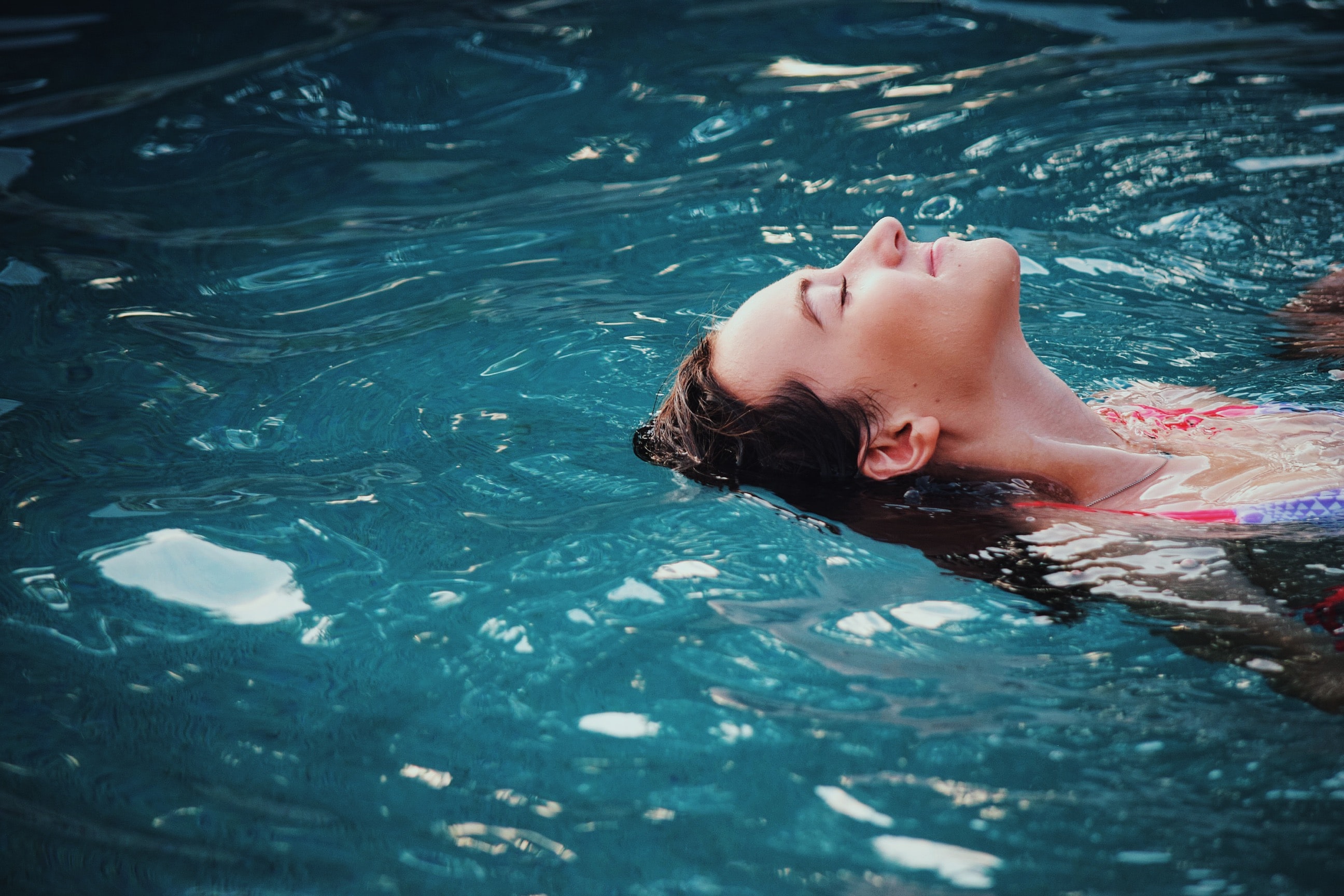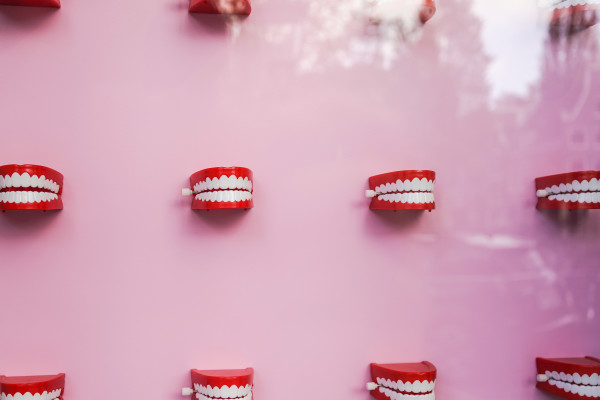What are the main perimenopause symptoms and what can you do to ease them?
6 months ago
Perimenopause6 months ago
Perimenopause
If you feel like you’re on a perimenopausal roller coaster, the good news is that there are smart lifestyle strategies that can help you feel strong and in control. Here, we get some perimenopause symptom relief from NHS Doctor, Bella Smith…
Reviewed by: Dr Bella Smith
From night sweats to mood swings, irritability and difficulty losing weight, the checklist of perimenopause symptoms you can experience can have a significant impact on your daily life. But the good news is that there are both medical and lifestyle interventions that can help you turn perimenopause into a positive and powerful experience.
Here are the top perimenopause symptoms and what you can do to help.
Hot flushes are the most well-known of the perimenopausal symptom, with around 80% of women affected by them. Often felt as an abrupt, sometimes quite dramatic flush of heat that runs through the body, a hot flush can cause sweating and redness, particularly in the facial region.
Why do we get hot flushes? “In the luteal phase of your monthly cycle, an increase of progesterone typically balances out the high levels of oestrogen in your body,” says Dr Bella Smith. When your body stops ovulating as usual though, your hormones can quickly fall out of whack. “It’s this hormonal imbalance that’s thought to cause hot flushes and sweating at night.”
“Exercising regularly, eating well, avoiding alcohol and spice, limiting caffeine and generally nailing your lifestyle can really help with hot flushes,” says Dr Bella. “But one of the biggest things is to really watch your stress levels.
“We know that cortisol and oestrogen compete, so if you’re very stressed, you're naturally going to be lower in oestrogen. If we can get your stress levels down across the board, it can really help with hot flushes and a lot of the other symptoms you may be experiencing.”
There's evidence that CBT can reduce hot flushes by as much as 50% and reduce the frequency of night sweats by 39%
Mindful activities like yoga and breathwork are scientifically proven to limit the stress-hormone cortisol in the body, so they’re well worth adding into your week, plus any self-care activities that bring you joy and help you destress.
“The thing that’s possibly less talked about is the massive psychological aspect to hot flashes,” says Dr Bella. “When you feel the sensation coming on and you’re at work or trying to get to sleep, it can lead to a sensation of panic, which can then make the symptoms worse.”
For a lot of women, there’s evidence that CBT - a type of talking therapy that helps you reframe your thoughts - can control anticipatory anxiety and reduce hot flushes by as much as 50% and reduce the frequency of night sweats by 39%.
When it comes to helping women with disrupted sleep caused by night sweats, there’s good evidence to suggest that practising good sleep hygiene, such as having a consistent nighttime routine and giving yourself 60-minutes of device-free time before bed can help. Other recommendations are to make sure your bedroom is at a comfortable temperature and that you stay away from caffeine late in the day.
Smart nightwear swaps may also have a positive impact, reveals Bella. “Often, it’s not the hot flush that tends to wake women up, but the cold sweat afterwards. To help with this, I recommend picking up some pieces from the sleepwear brand Become . They use a special sweat-wicking material that takes moisture away from the body, which can help you sleep through the night.”
HRT and hot flushes If your perimenopause symptoms are severe, many women find Hormone Replacement Therapy (HRT) is an effective option. It’s a type of treatment, administered via tablets, skin patches, gels, that replaces the hormones that are at a lower level as you approach the menopause. “HRT can help hot flashes by up to 90%, so it’s worth discussing with your GP,” says Bella.
We're often taught that testosterone is a 'male hormone', but testosterone levels are a really important driver for a woman's libido
A busy lifestyle, everyday stress, not enough sleep and many other factors can all push sex to the bottom of the to-do list. But, “during perimenopause, because your oestrogen and testosterone levels both decrease, it can also make you feel like you’ve lost your mojo,” says Bella.
Why do we have lowered libido in perimenopause? “We’re often taught to believe that testosterone is a ‘male hormone’,” says Dr Bella. “But testosterone levels are a really important driver for women's libido. When this naturally decreases as we age, it’s not uncommon for our libido to wax and wane during perimenopause too.”
The female brain is one of the most powerful erogenous zones, so lifestyle factors that contribute to a healthy brain and increase blood flow may have a positive impact.
That means making time for exercise that ramps up blood flow and increases levels of the good-mood hormone, endorphins. Eating healthily and making sure you take Omega-3 supplements, which are brilliant for hormone and brain health. You should also avoid smoking and excessive alcohol, which constricts blood flow.
Medical help and libido It can feel embarrassing talking to your GP about low sex drive, but because sexual difficulties are very common in perimenopause, with around 50% of women experiencing a loss of sexual desire , GPs are very used to being asked for help
Most practices often have a GP with a special interest in this area. “They may be able to prescribe testosterone gels that can help with boosting your sex drive,” says Bella. “If not, they will be able to refer you to a specialist clinic, who will be able to help.”
According to Dr Bella, up to 60% of perimenopausal women experience vaginal dryness, but only a small number of patients seek help for it. Whether you feel uncomfortable chatting to your GP about it or you put it down to natural ageing, there are things you can do to help.
Why do we get vaginal dryness? “Our pelvis, vulva and vagina are rich oestrogen receptors, so when our levels drop, you can start to get thinning of the vaginal walls, a drop in vaginal secretions and vaginal dryness,” explains Dr Bella.
This can lead to pain or discomfort during sex or exercise, a weaker pelvic floor and recurrent urinary tract infections.
“Low-risk vaginal oestrogen pessaries, taken twice a week, will effectively reduce some of the uncomfortable dryness,” advises Bella. “But if you’re squeamish about the idea of inserting pessaries, your doctor can fit a vaginal ring every three to six months instead.”
Because scented bath products are believed to worsen irritation, avoiding bubble baths is believed to help with dryness symptoms. And using water-based lubricants before sex can also help.
Mood swings, low mood and anxiety can peak around the time of the menopause - and it’s not uncommon to feel like everything and everyone is getting on your nerves.
“Your hormones are plummeting and changing,” says Bella, “and the fluctuation of oestrogen and progesterone in your body can cause feelings of anxiety or depression, rage and anger.”
Cycle tracking can be really great for pinpointing the times in the month where your mental health and mood is taking a dip, with this helping you spot trends and understand what’s happening.
According to Dr Bella, lifestyle changes can help too. Because perimenopause is a time of stress on a woman’s body, it’s practically prescribed that you start prioritising lifestyle activities that enable you to step back, destress and give your body a break. Whether that’s swimming, walking, shopping with friends or watching a Netflix series, this is a time to make sure that you put in place activities that reduce cortisol levels.
Feeling the stress at work? It could be as simple as taking a break to click on the kettle and look out of the kitchen window - “Because your retina is an extension of your brain you instantly feel a reduction in anxiety when you take a break from a small laptop screen and look at a panoramic view such as the garden or road outside. In fact, “some neuroscientists are now advising that we should try and look at a panorama every hour to help with stress levels,” says Bella.
If your body isn’t responding to exercise in quite the same way that it used to and you’re finding it hard to shift weight around your tummy, it may be a result of lower levels of oestrogen and higher levels of cortisol leading to increased fat storage.
Make sure you do two strength sessions a week to keep your metabolism ramped up, which helps to burn fat
It’s important to keep exercising through your perimenopause symptoms as it helps with feelings of positivity, bone health, brain health, muscle maintenance and so much more. But it may well be that the type of session you do may need some tweaking.
Because perimenopause is a stressful state on the body, it’s ok to do a hard or long session, but you need to leave time to wind down physically and hormonally so that you don’t leave your body feeling excessively stressed.
Whether that’s a longer cool-down or quick breathwork session at the end to calm the parasympathetic nervous system, it’s about sandwiching your sessions so that you finish a workout feeling relaxed rather than ramped up.
The other big recommendation is to make sure you include at least two strength and resistance sessions in your week. These will help to keep your metabolism ramped up, which helps to burn fat.
By adding weight, it helps you preserve muscle mass (which declines year on year as we age). It helps to protect bone health and also helps you to change your body composition so that there is more muscle than fat.
“Often women are put off by the idea of weights and strength because they think it will make them bulky, and that section of the gym can be intimidating,” says Jess Ennis-Hill, founder of Jennis , “but a 15-minute HIIT is classed as strength and resistance and often incorporates lots of the right moves to work on your strength.
Other perimenopause fitness tips from Jess include: “If you’re going into a hard session, you need to make sure you hydrate properly, so as not to stress the body even more. Plus, because we are more prone to injury during perimenopause (dehydration doesn’t help), it’s important to warm up properly.”
This is a great time to wipe the slate clean and prioritise all the things you have been meaning to do but have been too busy for
“Although we’ve talked a lot about symptoms today,” says Dr Bella, “the one thing I want to stress is that perimenopause isn’t all doom and gloom. “Because our health suddenly comes into focus, perimenopause can be a stage in life where women take control of their health and prioritise themselves for the first time in decades.
“If you think about your job, family, house and all the things that you are juggling at this age, we’re often so busy that we forget to prioritise ourselves, so this is often a great time to wipe the slate clean and prioritise the things you’ve been meaning to do but have been too busy for, such as exercise, healthy eating and so on.”
Dr Bella is one of the experts behind The WellHQ
 Cycle syncing
Cycle syncing Perimenopause
Perimenopause Perimenopause
Perimenopause Perimenopause
PerimenopauseSign up to learn everything you need to know about CycleMapping, plus how you can live better and feel better through optimising your fitness to you.
This website uses cookies to ensure you get the best experience on our website. Learn more

Sign up for the very latest news on women's fitness, health and hormones, plus be the first to receive exclusive offers and extras